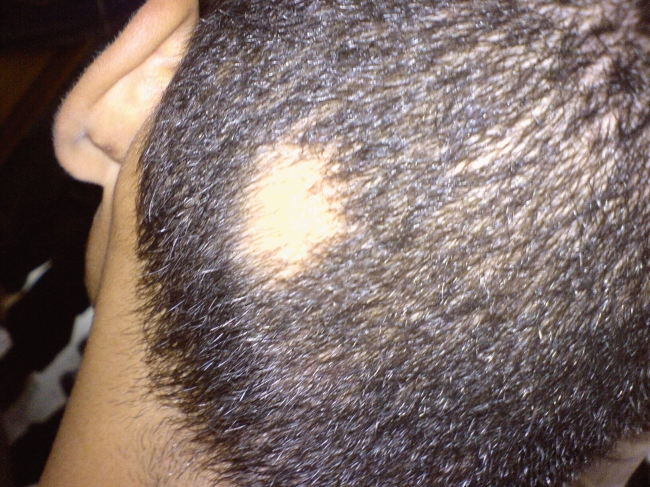
The frightening thing about Alopecia Areata is that it can sneak up on you any time without you knowing why. Not much is known about what causes it. There’s a general idea in the medical community that genetics, stress, poor diet and aging and immunodeficiency diseases are usually responsible. If someone in your family has it, you should be doubly watchful. But why wait for the bald spots to start appearing before you do something about it? Start taking care of your hair, crack down on everything that causes you stress, and change your bad eating habits. Also, exercise to keep testosterone levels low and you may be able to simulate new hair growth.
There is no guarantee that you can prevent Alopecia if it’s in your genes; nor can you prevent new patches from forming with these measures. You can, however, have a healthy lifestyle that will increase the chances of new hair growth.
Stay away from ‘hot’ hair treatments
This means you should keep your curling irons, hot brushes, hot curlers, hair straighteners, hair fasteners and even chemical treatments locked away. Use these only occasionally and carefully. Constant and frequent heating and drying techniques can make hair brittle and fragile. They make the protective cuticle rough from too much heat. This can cause your hair to look flaky and dry. It can also cause hair loss that you may otherwise have easily avoided.
Thermal styling hair sprays provide temporary protection from the heat. However these have their own problems and chemical deposits from long term usage may add to your hair loss problems. Also, burning your scalp can permanently damage hair follicles. Don’t believe the gloss of ‘safety’ that salons put over styling techniques that use heat. Instead, dry your hair naturally.
Don’t dye your way to hair loss
Not all hair dyes are bad for your hair, if you use them correctly. However, some contain chemicals (such as PPD) and people often develop allergies to these. Sometimes, the allergies irritate the follicles in the scalp and make them lose hair more quickly. Or they cause itching which can be severe enough to damage the follicles and break away strands of hair.
Most people face hair damage from misusing hair color. They either leave the dye on too long or don’t mix it as they should. Those that don’t want to give up on the option of hair coloring can use semi-permanent dyes or natural dyes like henna. Semi-permanent dyes are not chemical-free, but they have less chemicals than the permanent dyes. Metallic dyes can also work for some people that are not allergic to them.
Your ‘rope of hair’ is not really rope, treat it gently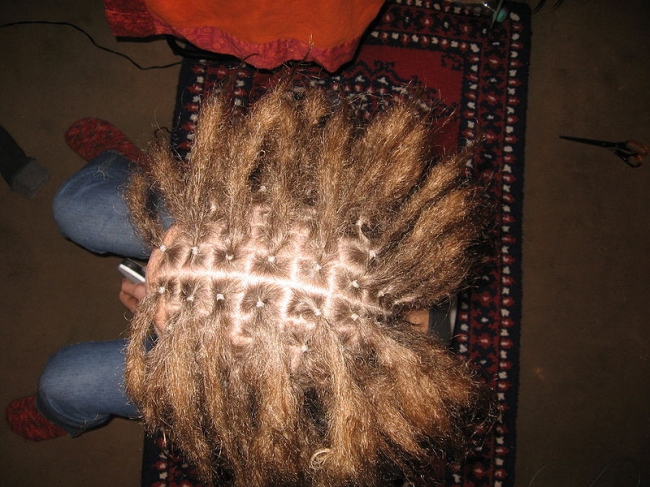
The way you style your hair also determines how long it remains healthy. The more you tie your hair back in tight knots, ponytails and braids, and use elastics and clips that pull on the roots of your hair, the greater are the chances that you will develop hair loss.
The International Journal of Cosmetic Science carried out studies on everything from breakage to alopecia and found that too much twisting or braiding your hair too often can cause breakage. These hairstyles cause tangles, and when you try to loosen them, the hair breaks. Your cuticle is also vulnerable to chipping from too much stress and if you twist it too hard it can’t relax back to its original length fully. This causes it to break. The hair cuticles weaken as a result and speeds up hair loss. This doesn’t mean that you should stop braiding or knotting your hair – just be sure to do it gently.
Keep your scalp clean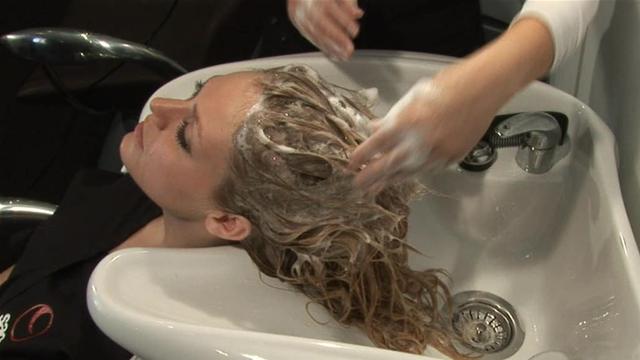
A dirty scalp can cause infection and hair loss. Therefore, it’s essential that you wash your hair regularly with a mild shampoo. Air and water pollutants, toxins from the environment, styling products and too much sebum can get deposited at the roots of hair and block hair follicles. This can cause the follicles to deteriorate and slow down hair growth. The debris can also damage the hair cuticle, weaken it, and cause it to break off too soon.
Therefore, wash your hair every day (or every other day) with a mild shampoo. Also, make sure that you do this gently, since wet hair is vulnerable to breakage and you don’t want to add to any hair thinning that you may already have. Don’t brush wet hair or towel too hard. Use your fingers to untangle wet hair and pat dry instead of rubbing.
Test hair for thinning if you think you’re losing some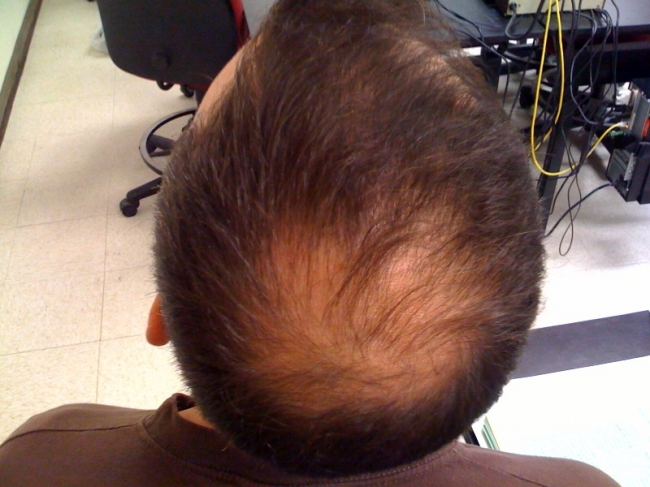
If you feel that you have been losing more hair than is normal, the first thing you should do is see a trichologist. Remember that losing hair on a daily basis is a normal and natural process of hair growth. The number of hair strands that you lose each day is going to depend on a variety of factors, and that number will be unique to you. Therefore, you should get tests done to find out if you are indeed losing unusual amounts of hair.
For most people that start losing hair in small patches, the hair grows back within a year. For those with more patches, the hair may grow back, or develop from Alopecia Areata to Alopecia Totalis. In this condition, the hair loss spreads to the entire scalp. In very rare cases do patients develop Alopecia Universalis. When you have determined what the problem is, you can then seek proper treatment.
Bust that stress before it turns you bald!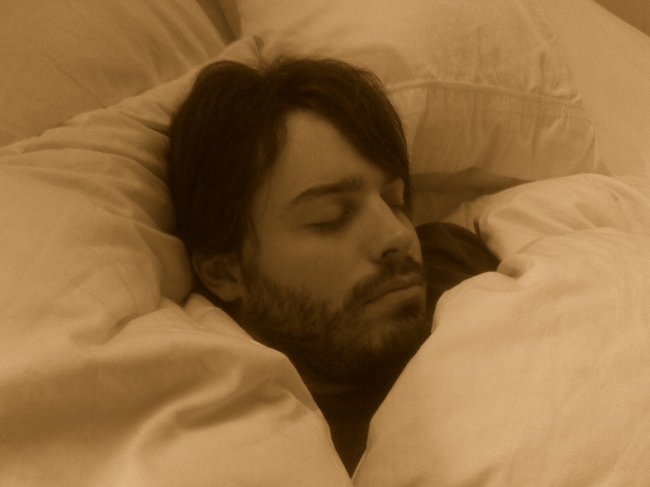
Stress can restrict blood supply to capillaries. Poor oxygen supply to the blood results in poor absorption of nutrients, and hair growth slows down. In fact, loss of hair is often one of the first distress signals that your body gives out to tell you that you’re not doing as well as you should.
One of the best solutions for stress is adequate sleep. Sufficient daily sleep that is in tune with your body’s circadian rhythm can give your body the time it needs to heal. Also, exercise regularly to increase blood circulation. This will pump more blood to your system – as well as your scalp – and improve absorption of nutrients into your body. It will also bring down your stress levels. Your scalp condition will slowly go back to normal and any mild hair loss that you may have experienced may be reversed.
Eat the right things and keep your hair healthy
It’s common sense that nutrition can make a big difference to the condition of hair loss. A healthy body is more likely to have healthy hair. The more fruits and vegetables you include in your diet, the more healthy your hair will be. Hair loss may also be slowed down by including certain foods into your diet.
A diet that contains too much of animal fat (such as in junk food) or Vitamin A can cause hair loss; avoid these. Include iron-rich beans, liver, beef, leafy greens, fish etc. in your diet. You will find essential zinc in lean beef, peanut butter, oysters etc.
Amino acid-rich protein from seafood, milk, eggs, soy, etc. are also essential. Vegetarians and vegans can get protein from lentils, broccoli, peanuts, beans, nuts etc. Vitamin C can be absorbed from a diet rich in leafy vegetables and citrus fruits. Omega 3 fatty acids found in fish such as tuna and mackerel as well as walnuts and flax seeds protect hair from brittleness and the B vitamin Biotin from lentils, soybeans and walnuts is essential for hair as well.
Keep away from food that damages hair
Just as there are foods and nutrients that can help hair to grow, certain foods are bad for hair growth. Depending on your genetic makeup, such foods can cause either temporary or permanent hair loss. Very low-calorie liquid diets can harm hair growth. People who have attempted to lose weight quickly with low-calorie diets made up entirely of liquids have faced side effects such as dizziness and hair loss. Also, any diet and exercise plan that depletes a large portion of your energy can trigger or aggravate hair loss.
Raw egg whites should also be avoided. We all know that raw egg may contain harmful bacteria. But it can also inhibit the absorption of biotin in the body by binding it. Since biotin is essential for hair growth and healthy hair, its deficiency can cause hair loss.
Take supplements if needed
Since proper nutrition is such an important aspect of a healthy body and healthy hair, if your lifestyle prevents you from keeping healthy eating habits, consider taking nutritional supplements. This applies equally to vegans and vegetarians who cannot get essential nutrients that are found only in fish and meat.
Some of the supplements that are commonly available are iron, biotin, vitamin C, inositol and a compound called palmetto (used for treatment of prostrate enlargement). It’s believed that Palmetto can also cause hair growth in men. Before you introduce any supplements into your diet, however, be sure to consult with a medical practitioner.
Try medications to arrest hair loss in early stages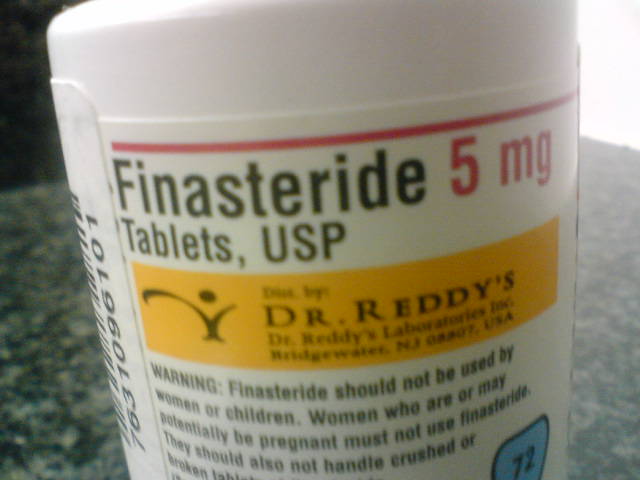
There are some medications – oral as well as for spot applications – that have recently entered the market as possible solutions to hair loss. Cortocosteroid creams and injections have been successful in treating alopecia areata in some cases, though with limited effectiveness.
Some other medications that people sometimes find works for them include FDA approved minoxidil and finasteride, irritants such as topical coal tar or anthralin which stimulate growth, a steroid cream called elocon ointment and topical application of cyclosporin for immunotherapy.
Oral corticosteroids can only suppress the formation of patches temporarily, and that too only during the duration for which the cream is applied. Moreover, patients using it on a regular basis sometimes develop side effects from it. Some ointments like Protopic may also be able to suppress small patches that appear on the beard and head.
If you couldn’t prevent it, try hair restoration surgery
There are several surgical options available for men that are not yet possible for women. However, these options need thoughtful consideration before they are explored.
There are two main surgical options available. In the process of hair transplantation, tiny slivers of skin containing hair follicles are taken from the more well-endowed parts of the body (such as the back of the head) and attached to the empty patches. Some surgeons sew on just a hair or two with a needle and thread. This process has not yet proved successful with artificial fibers. Also, women, who have the tendency to lose hair in diffuse patches, cannot benefit from this process.
Scalp reduction is another option. In this, devices are implanted under the skin that stretch the part of the scalp that has abundant hair. The bald patches are removed. Sometimes, flaps of scalp rich in hair follicles can be moved around on the scalp via surgery.




